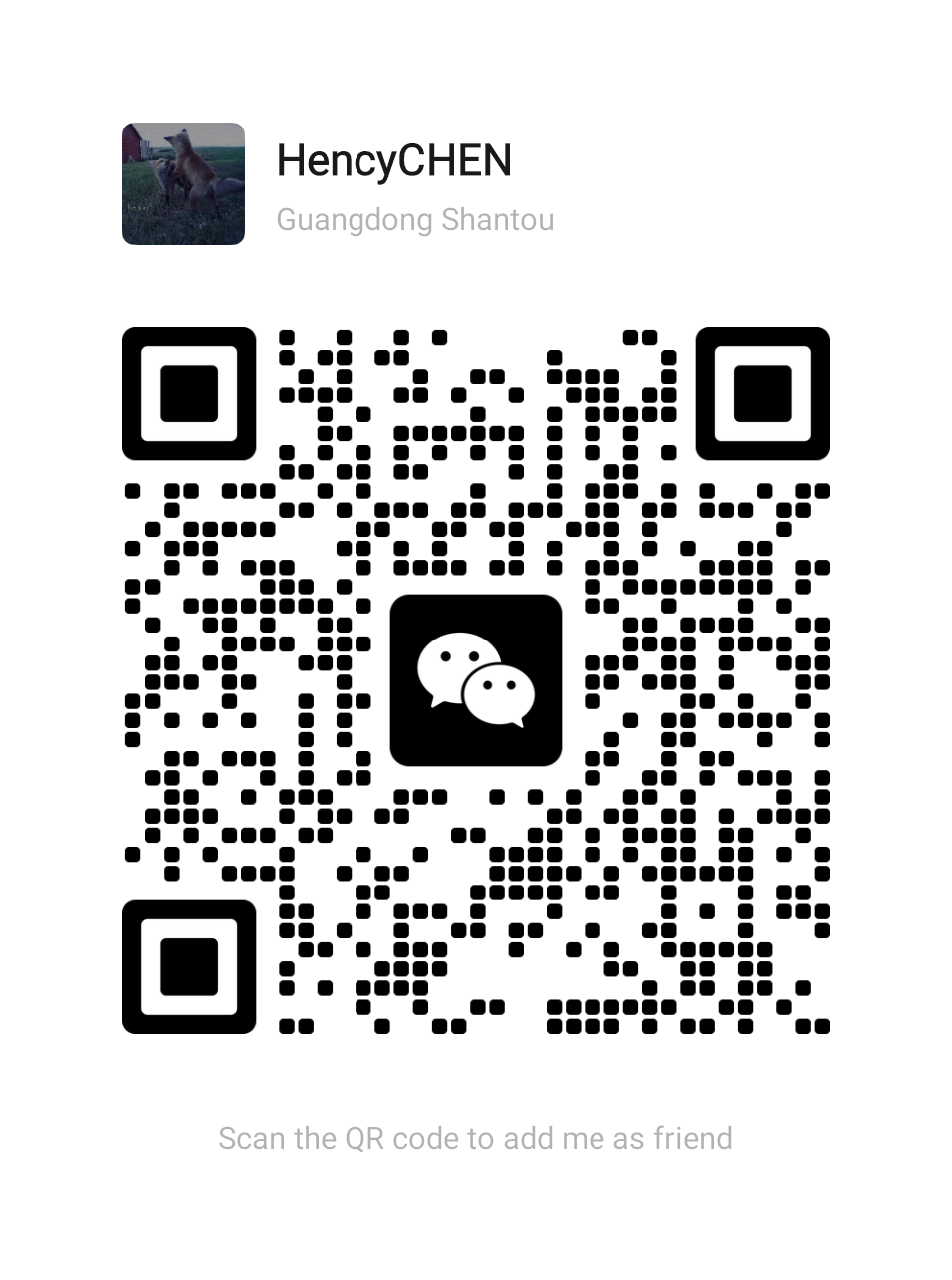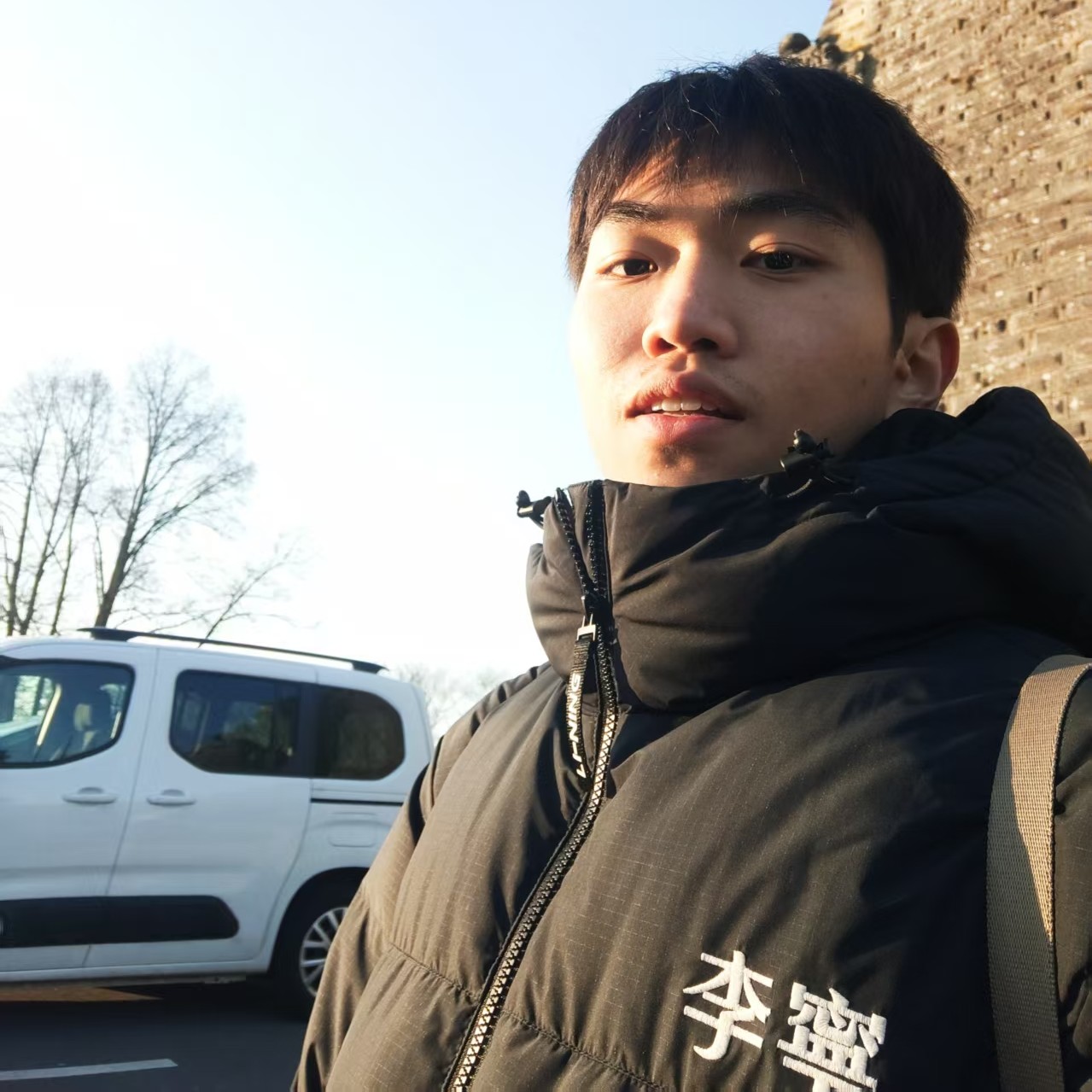
"Let robots do the dull, dirty, and dangerous."
"顽强的海盗从不需要灯塔."
🧑💼About Me
- I'm a research assistant in Robotics.
- Research Assistant at: Shenzhen Technology University(SZTU), 08.2024 - present
- Undergraduate student at: Shenzhen Technology University(SZTU), 09.2021 - present
- Exchanged student at: Hochschule Coburg, 03.2024 - 08.2024
- Current Lab: Arbeit Gruppe Dexterous Robotics(AGDR) Lab, 09.2021 - present
Education
Interests
Mobile Manipulation SLAM VLA🛠️Selected Projects
📚Publications
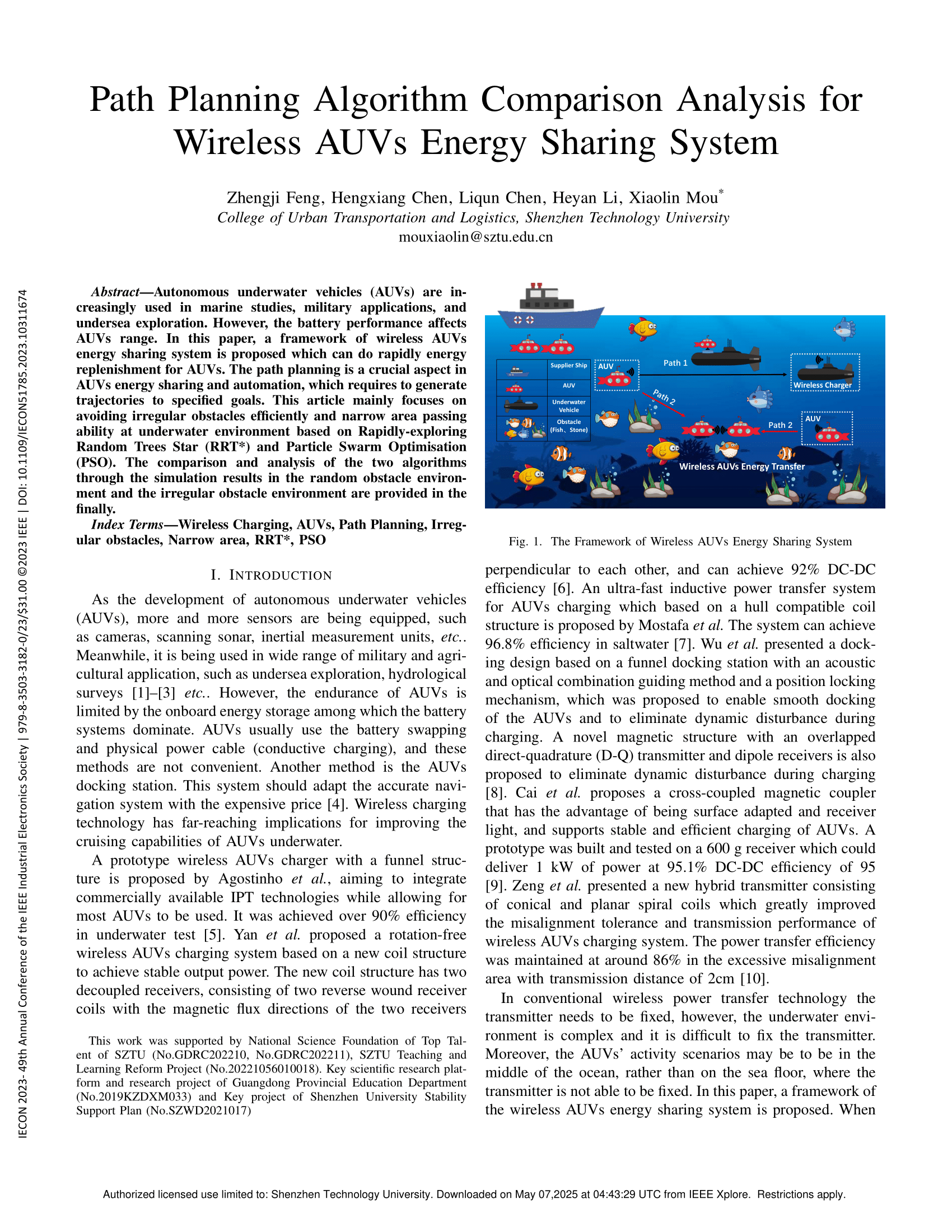
Path Planning Algorithm Comparison Analysis for Wireless AUVs Energy Sharing System
In this research, we proposes a wireless AUV energy sharing system for underwater recharging, focuses on path planning to navigate from supplier AUV to consumer AUV in complex underwater environments, we evaluate and compare path length、energy consumption and time/space complexity of RRT* and PSO algorithms under different scenarios (static obstacles and dynamic obstacles、common conditions and narrow area).
View on GitHubPaper Address
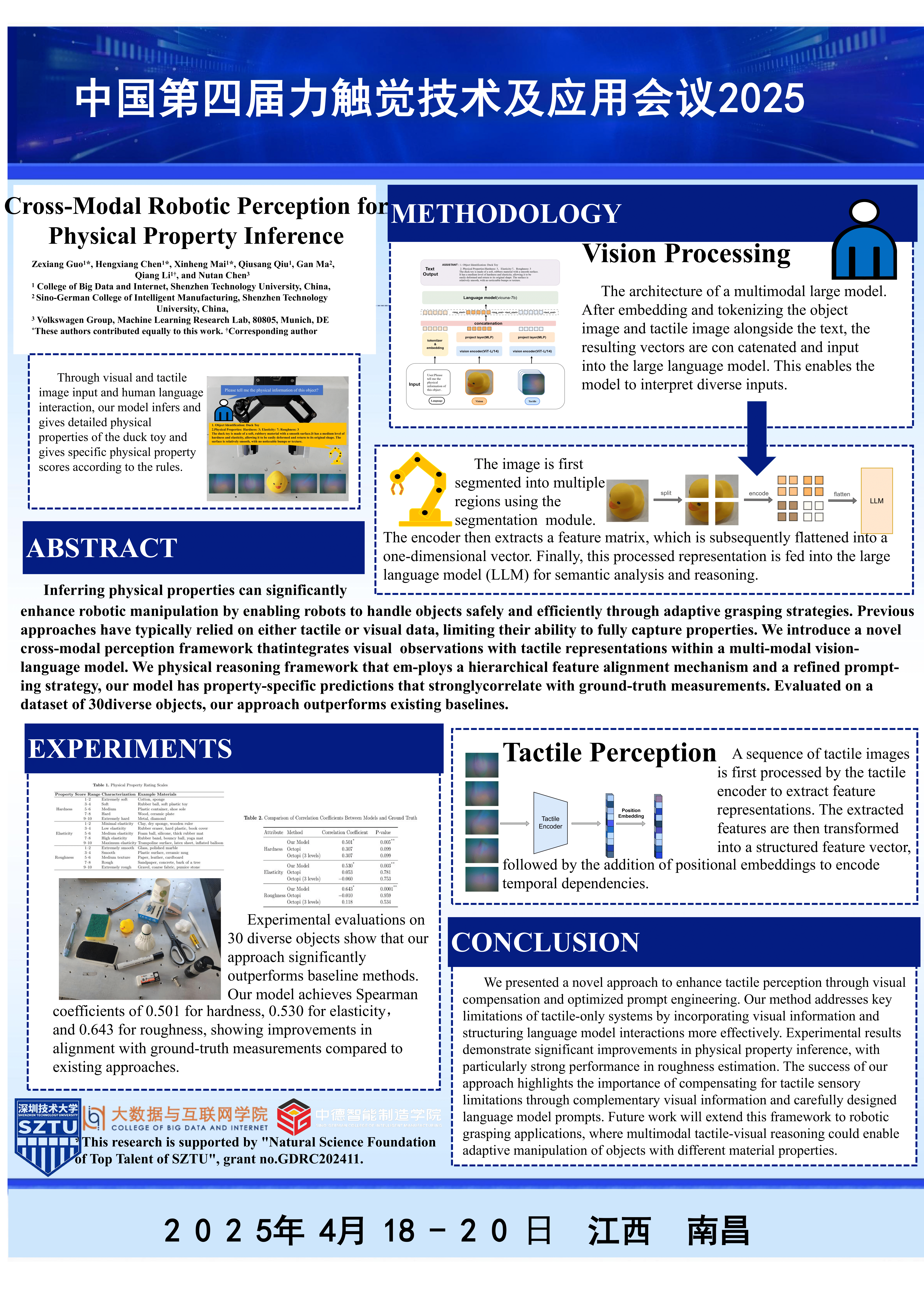
Cross Modal Robotic Perception with a Large Vision Language Model for Physical Property Inference
Inferring physical properties can significantly enhance robotic manipulation by enabling robots to handle objects safely and efficiently through adaptive grasping strategies. However, previous approaches have typically relied solely on either tactile or visual data, limiting their ability to fully capture object properties. In this work, we propose a novel cross-modal perception framework that integrates visual observations with tactile representations within a multimodal vision-language model. Our physical reasoning framework incorporates a hierarchical feature alignment mechanism and a refined prompting strategy, enabling property-specific predictions that correlate strongly with ground-truth physical measurements. We evaluate our approach on a dataset comprising 30 diverse objects and demonstrate that it outperforms existing baselines in accurately predicting physical properties critical for robotic manipulation.
View on GitHub🏆Competitions
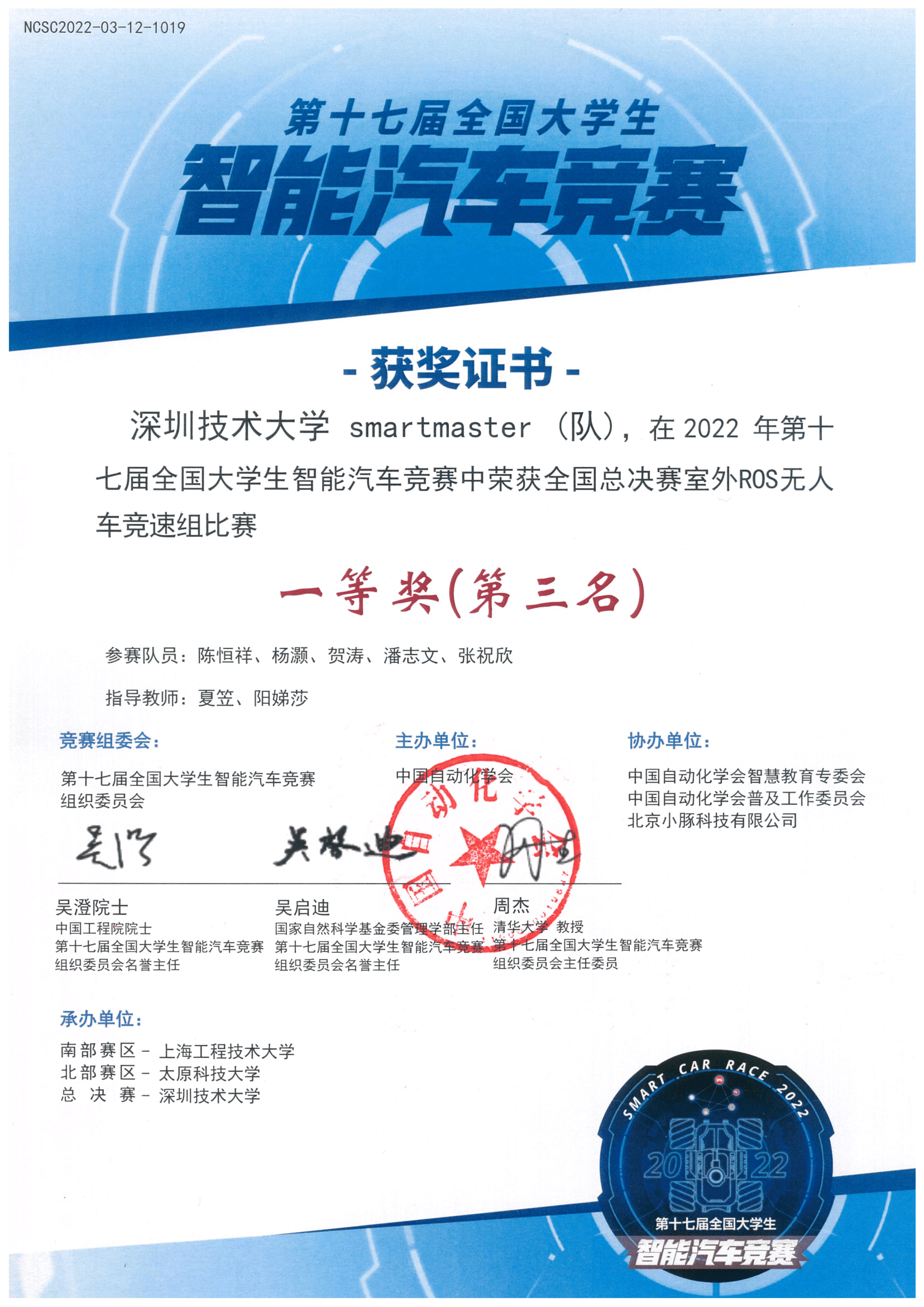
3rd place in the outdoor ROS competition of the 17th National College Student Smart Car Competition
The race track is delineated by red and blue cones marking the left and right boundaries. The competition requires completing the first lap through autonomous mapping, followed by a second lap involving autonomous navigation in the shortest possible time. Our solution utilized a comprehensive technology stack, including high-level chassis controller design, multi-modal data fusion of vision and radar for obstacle detection, map optimization, and autonomous localization and navigation tracking.
View on GitHub.png)
5th place in the 25th China Robotics and Artificial Intelligence Competition
Developed a robot navigation system capable of reaching specified target points in minimal time within a closed environment, handling narrow corridors and complex discrete scenarios (e.g., double figure-eight turns formed by cone markers) using Ackermann steering chassis. Employed Gmapping for SLAM-based environment mapping, AMCL for localization, and MoveBase for path planning.Implemented a Pure Pursuit (PP) algorithm for real-time target point tracking and path following.
View on GitHub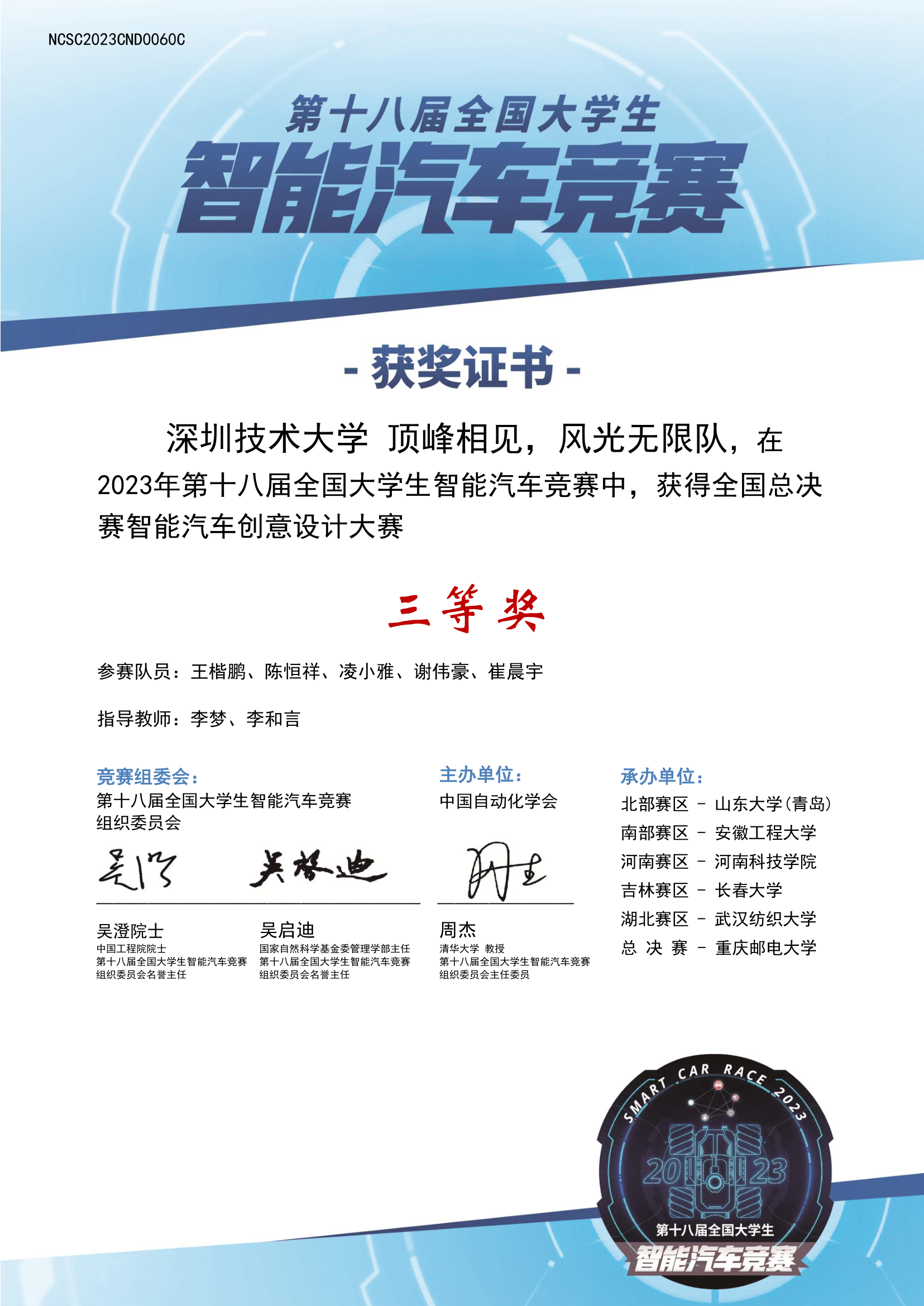
3rd Prize in the National College Students Intelligent Car Competition Intelligent Car Creative Design Competition
This project was developed by the "顶峰相见,风光无限" team from Shenzhen Technology University as part of the 2023 National College Student Smart Car Competition. Built upon the official competition chassis, the team focused on optimizing vehicle structure, sensor layout, and control logic design to create a dual-mode intelligent concept car that balances functionality and aesthetic expression.
View on GitHub💼Internship Report
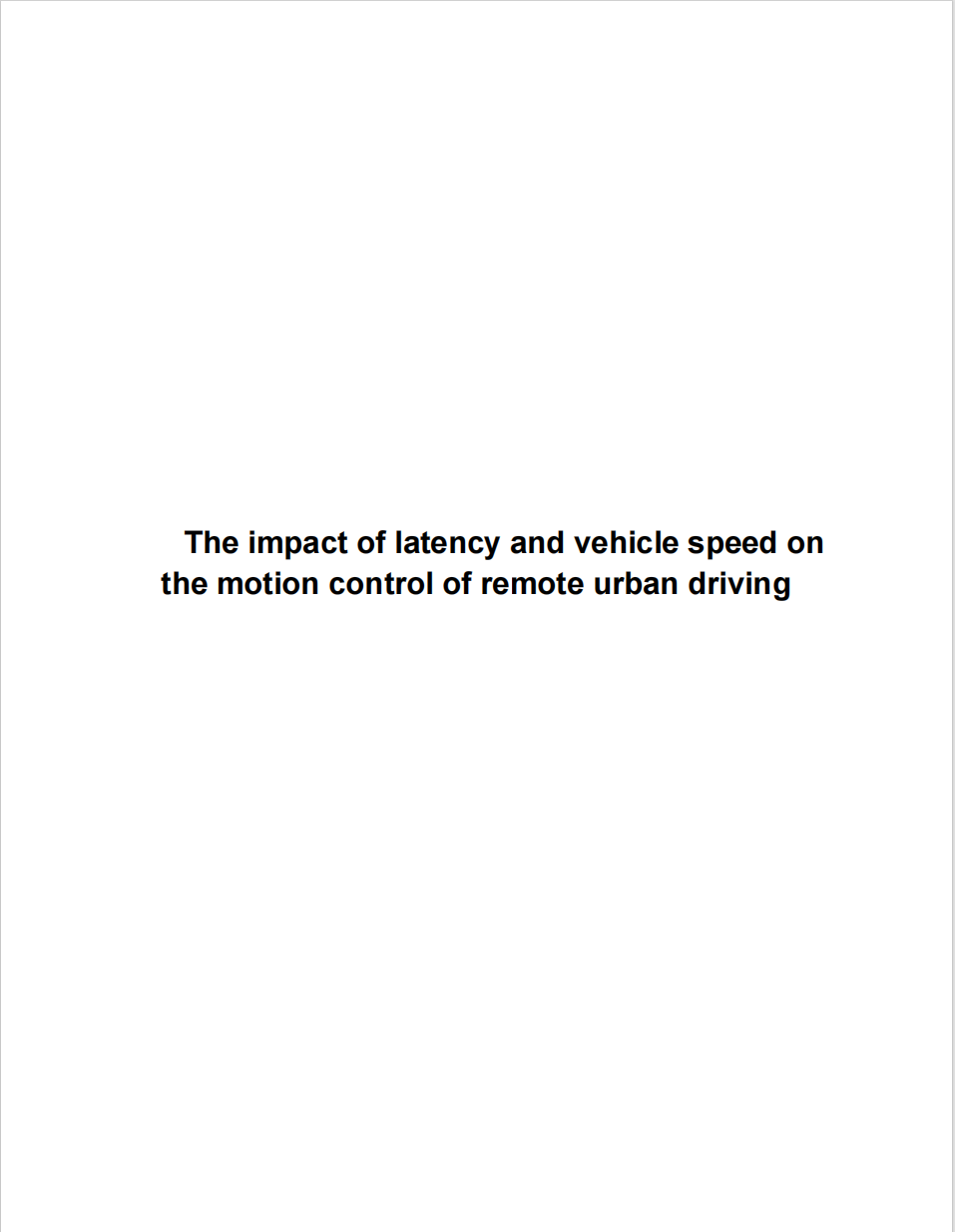
The impact of latency and vehicle speed on the motion control of remote urban driving
In this research, we quantitatively analyzes the impacts of latency and vehicle speed on motion control in remote urban driving through statistical modeling of simulation results and real-world vehicle data. It employs Time To Collision (TTC) as a collision risk metric to evaluate and quantify the risk associated with different latency scenarios. Experimental results indicate that higher latency significantly increases collision risks in specific traffic scenarios, such as protected left turns and intersections. The study proposes practical safety countermeasures, including scenario restrictions, speed optimization, and local Automated Emergency Braking (AEB), providing critical insights to improve the safety and reliability of remote driving systems.
🎓Graduated Paper
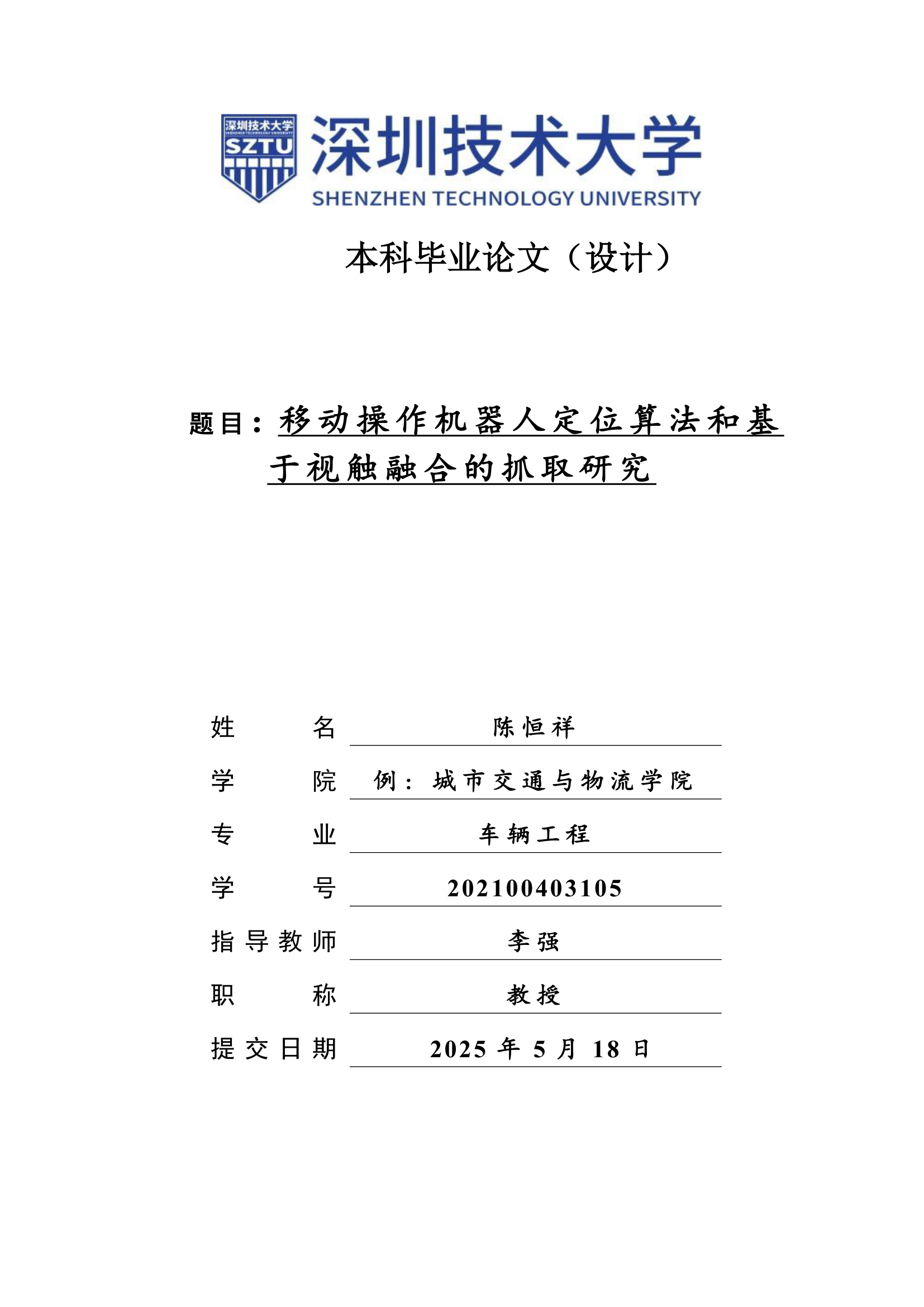
Vision-Touch Guided Grasping for Mobile Manipulators control of remote urban driving
Problem: Mobile manipulators often struggle with accurate object grasping and long-range navigation in semantically rich, dynamic environments. Approach: Designed a full-stack robotic system combining Cartographer for high-precision localization and GraspNet-based 6-DoF grasp pose prediction under RGB-D Realsense D455i and tactile sensor (Gelsight Mini). Built a ROS-based pipeline integrating YOLOv8 for object detection, SAM for segmentation, and MoveIt for motion planning.
Outcome: The localization accuracy was verified through qualitative and quantitative experiments, and crossing-navigation and object grasping in different scenarios were realized.
